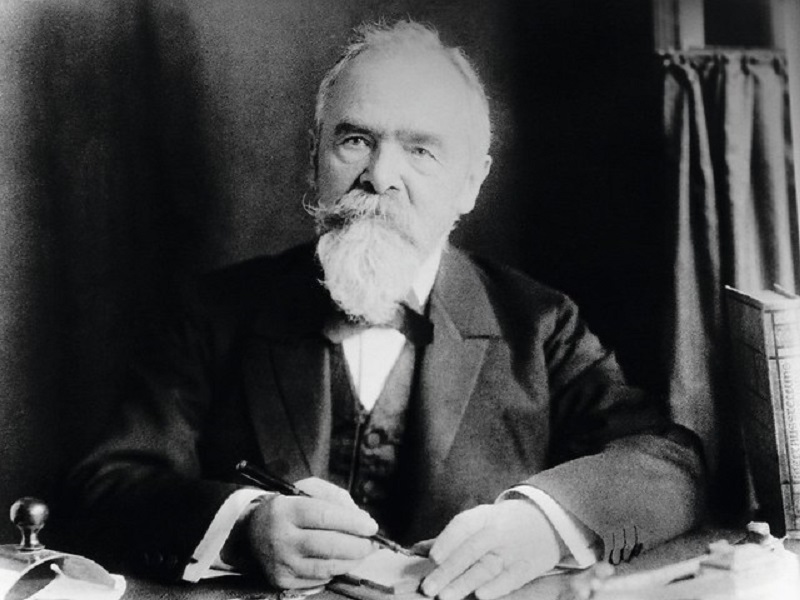Who Invented the Refrigerator?
Carl Paul Gottfried von Linde (11 June 1842, Berndorf, Bavaria – 16 November 1934) was a German scientist. He is known as the inventor of the refrigerator.

The device Linde had built was powered by a steam engine that pumped freon gas into the back of the food compartment. The gas in the pipes condensed into a liquid state. During condensation, the temperature of the gas drops, keeping the food compartment cool.
He was born on 11 June 1842 in Berndorf, Bavaria, and died on 16 November 1934 in Munich. He studied engineering at the Eidgenössische Polytechnikum in Zürich between 1861 and 1864. After working in some industrial establishments near Berlin for 2 years, in 1868 he was appointed as an assistant at the Polytech-nische Schule (today Technische Hochschule) in Munich. He made an invention at this school, where he was appointed professor of theoretical engineering in 1872 and provided Germany's first engineering laboratory: the refrigerator...
His research on the theory of heat, from 1873 to 1877, led to the invention of the first successful compressed ammonia refrigerator. Plans to build the refrigerator were completed in January 1873 and a patent application was filed. However, the Bavarian patent office required the machine to be operational within a year. In January of 1874 they succeeded in getting the machine running.
But the first refrigerator had some problems. The biggest problem was that von Linde's mercury seal didn't work properly so the methyl ether used as a refrigerant leaked out of the compressor. With his student and assistant Friedrich Schipper, von Linde designed a new compressor with more effective sealing. The newly designed sealant was glycerin and a more efficient ammonia was used as the coolant. The weight of the new machine was half the weight of the previous one.
In order to realize the commercial production of this invention, he left his academic position in 1879 and founded his own company to develop his project. His company's first customers and partners were brewers.
Linde, who managed to make and sell about 1200 refrigerators in ten years in the factory he established in Wiesbaden, retired in 1891 and returned to his teaching and research. He developed techniques to liquefy air and separate oxygen and nitrogen from each other, and established factories that produced liquid oxygen and nitrogen.
Concentrating his research on the theory of heat and the cooling of gases, Linde made refrigerants working with methyl ether in 1874 and with compressed ammonia in 1876. With these devices, he overcame the technical inadequacies of the previously developed refrigerators, which could not be brought into daily life, and expanded the practical use of refrigerators.
Linde also made use of the Joule-Thomson phenomenon in the process of liquefying air.
Namely: It used a gas, which was cooled by expansion after being compressed, to lower the initial temperature of a second gas. It then compressed and expanded this second gas, reaching lower temperatures. With this gradual cooling technique, repeated as necessary, he ultimately liquefied the air. With his method, it became possible to produce liquid air in large quantities and to use it in industry. In particular, pure liquid oxygen, which it succeeded in separating from liquid air, found widespread use in many areas of heavy industry.
He was knighted in 1897, and from that moment on, the honorary word "von" was added to his surname.
He died as a famous industrialist in Munich in 1934 at the age of 92. The company that Linde names today is a leading gas and engineering company with operations in more than 100 countries around the world.
